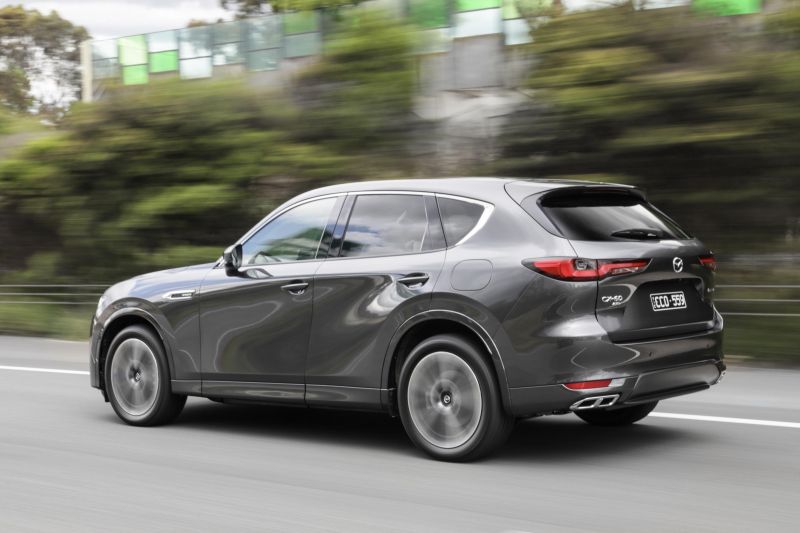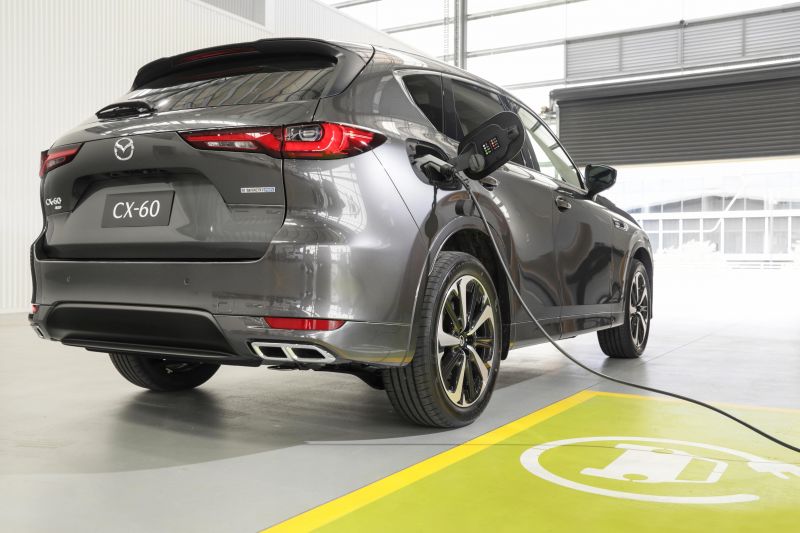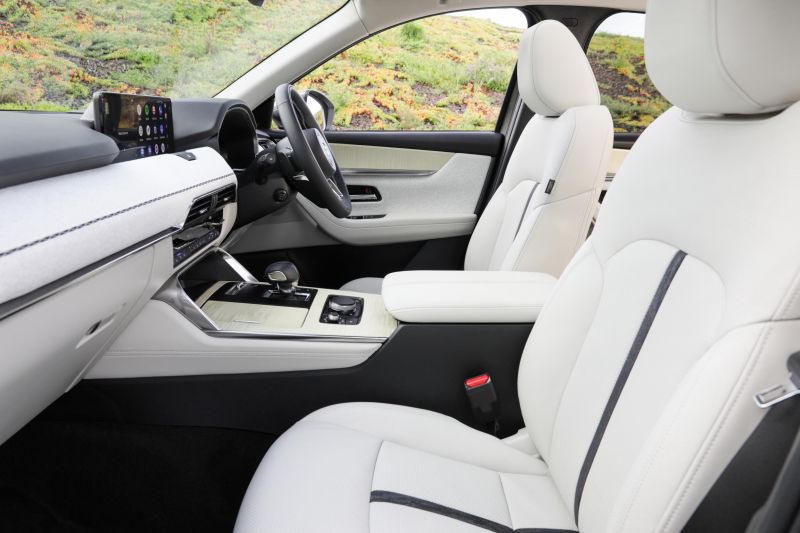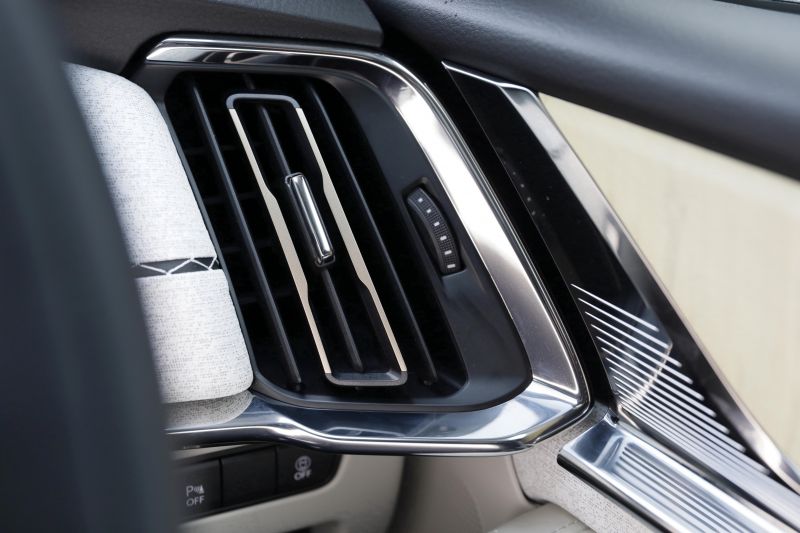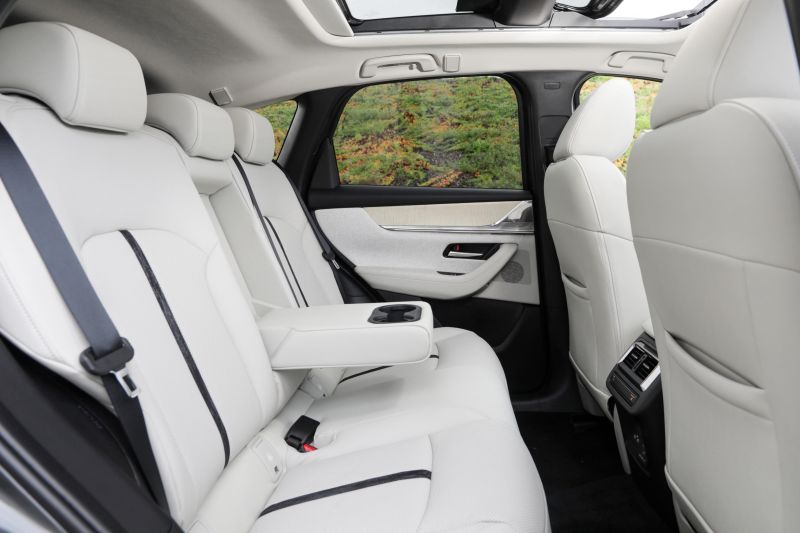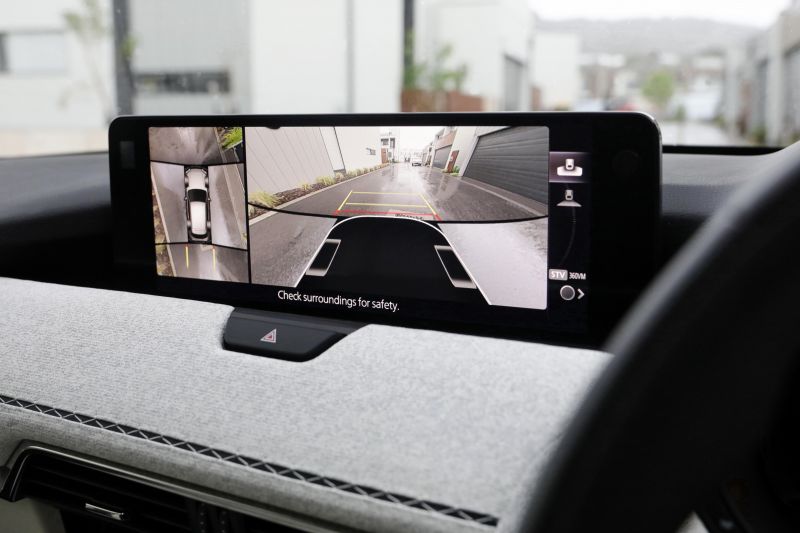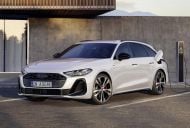While Mazda is looking to tempt buyers out of their premium European cars with its plush new CX-60, it’s even more focused on using it to retain existing fans as they become wealthier.
Detailed this week ahead of a June 2023 launch, the CX-60 premieres new inline-six petrol and diesel engines, as well as Mazda’s first plug-in hybrid drivetrain.
In terms of performance, technology, interior design and finish, and price, it’s nudging into new territory for the company – unless you count the brief Eunos experiment which we profiled here.
We asked Mazda Australia managing director Vinesh Bhindi about the CX-60’s demographic breakdowns, to better understand who this vehicle is for.
“So let me say, it’s ‘Mazda Premium’. So it’s our version of what we believe we will offer to our fan base that is more premium than what they have been used to in the past, or seen from us,” Mr Bhindi said.
“What does Mazda premium mean? Well, it’s the next level of craftsmanship. It’s the next level of technology. It’s the next level of the jinba ittai feeling.
“As a business, it gives us an opportunity to expand where our product offerings are, and possibly even attract customers that wouldn’t have considered us before.
“But more importantly, it’s actually giving an option to our fan base before they exit us, because their status in life has gotten to a point where they can maybe go more towards the ultra luxury brands, right?”
Jinba Ittai, by the way, is a Japanese phrase describing the unity between horse and rider, with said horse serving as a car metaphor.
When pressed for a rough guess on what proportion of CX-60 buyers might be conquested from more luxurious marques, Mr Bhindi speculated they might be in the minority – although perhaps not at first.
“It’s an estimate, but I think the majority will be existing Mazda fans,” he said, though the company also points out that of the 1600 enquiries it’s fielded so far, 60 per cent were from people who did not own a Mazda.
We also asked about ‘options paralysis’ – referring to Mazda’s planned medium and large SUV line-up that’s set to include CX-5, CX-8, CX-9, CX-60, and the now-confirmed CX-90. Is there such a thing as too much choice?
“It’s an interesting one because I’m sure many companies will never get it right because it’s either too [few] or too many,” Mr Bhindi replied.
“Our strategy has been for a while that we want the customers to decide, and if Mazda Corporation is producing something and that vehicle is available to us and makes business sense, we will have that option available for Australian consumers.”
More on the Mazda CX-60
At the top of the range is the first Mazda plug-in hybrid, called ‘e-Skyactiv PHEV’.
It pairs a 2.5-litre petrol engine with an electric drive motor and large 17.8kWh battery pack in the floor between the axles, with system outputs of 241kW and 500Nm – enough for a 5.9-second 0-100km/h time.
This makes the CX-60 PHEV the most powerful road-going Mazda to date.
Mazda also claims overall electric range in EV mode is up to 76km, although in the UK the more realistic WLTP-rated claim is a still good 62km. Fuel consumption is rated at 2.1L/100km, over the first 100km when the battery is charged.
Mazda claims the battery can be recharged in around 2.5 hours using a 7.2kW AC wallbox home charger.
Meanwhile the six-cylinder turbocharged petrol and diesel both share a 3.3-litre displacement and join the line-up for the first time, with each using 48V-based ‘M Hybrid Boost’ mild-hybrid technology.
The petrol engine is expected to produce 209kW and 450Nm, and offer a 0-100km/h time of 6.9 seconds – which Mazda points out is almost a second faster than the CX-5 with its 2.5-litre turbocharged four.
The diesel delivers 187kW and 550Nm and hustles from 0-100km/h in a sharpish 7.3 seconds. It also offers a hybrid-beating fuel economy claim of just 4.9L/100km.
All engines are combined with a newly developed eight-speed automatic transmission, and new rear-biased all-wheel drive system with Normal, Sport, Off-Road, Towing and EV (PHEV only) drive settings.
The CX-60 is underpinned by Mazda’s new ‘Skyactiv Multi-Solution Scalable Architecture’, which is designed as rear- or all-wheel-drive and will underpin more future premium models.
Driver assistance systems include a ‘See-Through View’ for the 360-degree cameras; and a system that adjusts the seat, wheel, head-up display and mirrors to match the driver’s eye position and uses facial recognition to remember presets for vehicle, audio and climate settings.
You can read a much more detailed breakdown of the CX-60 feature walk across Evolve, GT and Azami spec levels here.
Pricing
Evolve
- Petrol inline-six: $59,800
- Diesel inline-six: $61,800
- PHEV: $72,300
GT
- Petrol inline-six: $67,800
- Diesel inline-six: $69,800
- PHEV: $80,492
Azami
- Petrol inline-six: $74,154
- Diesel inline-six: $75,000
- PHEV: $87,252
Prices exclude on-road costs but include luxury car tax where applicable
MORE: 2023 Mazda CX-60 pricing, inline-six from under $60k
MORE: 2023 Mazda CX-60 review
MORE: Everything Mazda CX-60



